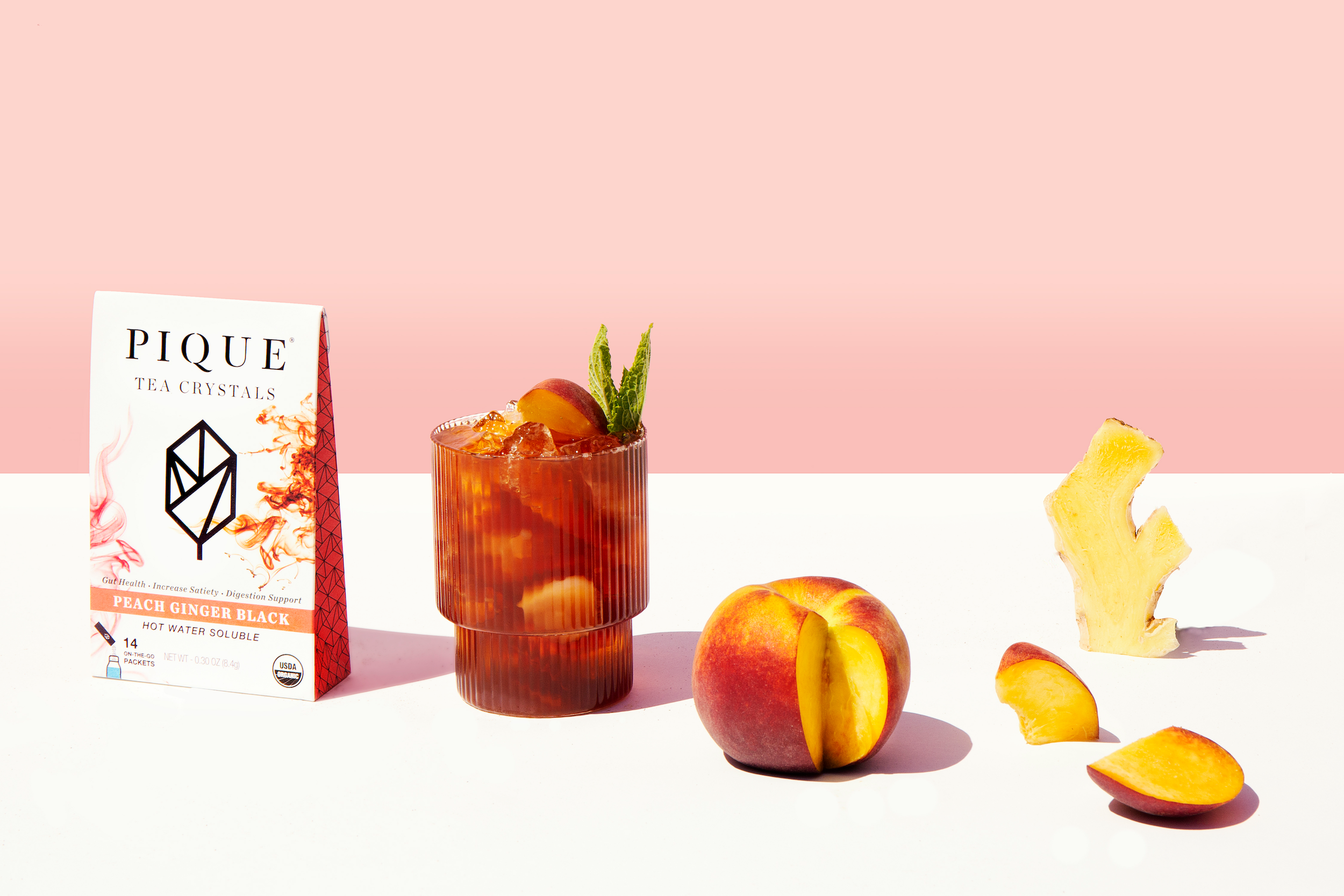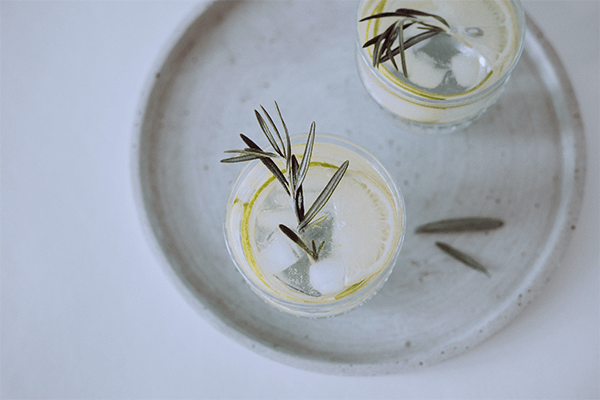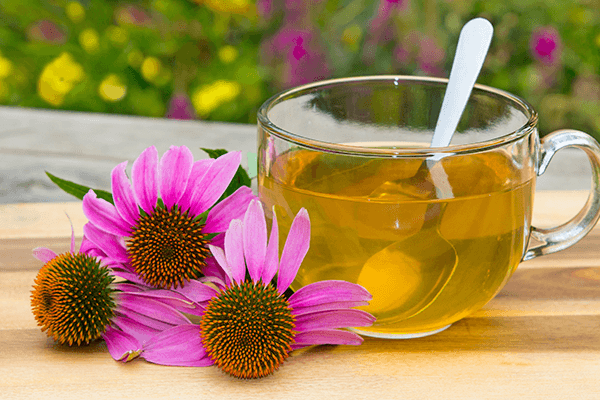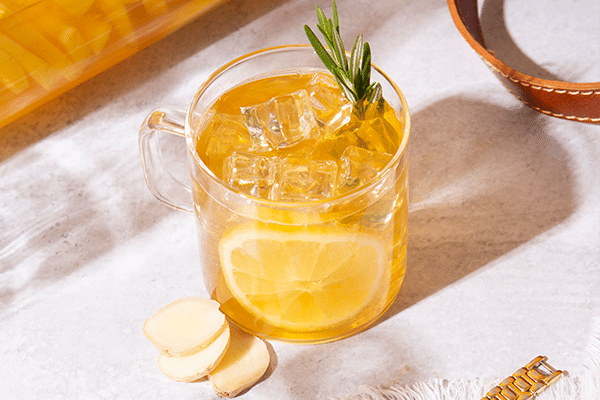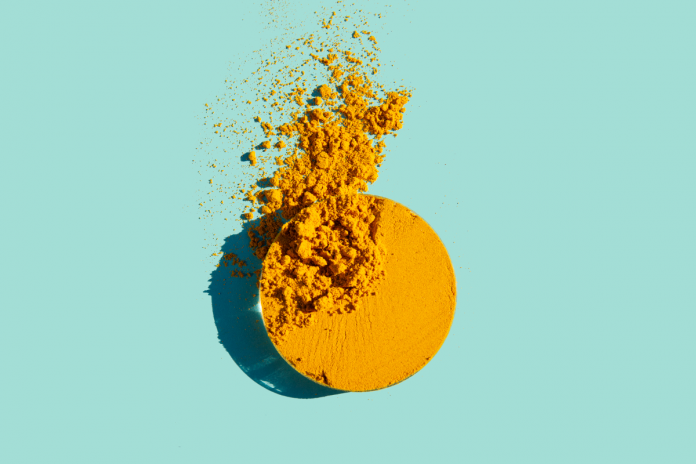When you think of “herbal tea,” some of the options that first pop into your head probably include chamomile, hibiscus, ginger, chai or rooibos — the types made from flowers and spices.
Dried fruits are often used as additives to true or herbal teas to add another flavor dimension, but most are never used as the foundation of the infusion itself — except for peach tea.
Peach tea has a history as a refreshing summer alternative to true tea, and a reputation as a healthy way to add both flavor and an extra dose of antioxidants to your day. But it’s not just a summer drink!
Here’s what you need to know about this fruity brew:
What is Peach Tea?
Peach tea is made from the dried leaves and bark of a peach tree. While it can be made using only these ingredients, they are commonly added to black tea. Many black peach tea bags will also include small pieces of the dried fruit and peel. Some peach tea recipes also use whole fresh peaches to infuse flavor — but more on that later.
Peaches originated in China in ancient times — roughly 8,000 years ago, though the exact timeline is unknown [1]. China still produces roughly half of the world’s peach supply. [2]
Mentions of peach appear in the ancient writings of several Asian cultures. For the Chinese and Japanese, peaches were a symbol of protection from evil and misfortune. For the Koreans, they represented happiness and honor. And the Vietnamese associated the Springtime blooming of peaches with the peace and renewal that comes after victory in battle.
In any case, peaches were revered as a symbol of happier times, and these ancient cultures used the fruit in any way they could – eating it raw, adding it to a variety of recipes, pulverizing fried fruit and leaves to make topical ointments, and of course, to make tea.

What is Peach Tea Good For?
Peaches provide 15% of the daily requirement of Vitamin C for most people. Peaches also contain Vitamin A, E and K, niacin, folate, iron, choline, potassium, magnesium, phosphorus, manganese, zinc and copper, though only in small amounts. [3]
Like any fruit or veggie, peaches are rich in antioxidants. By neutralizing free radicals and preventing oxidative damage at a cellular level, antioxidants reduce the risk of developing a range of health conditions.
One of those antioxidants, vitamin C is best known for its role in supporting a healthy immune system. It also plays an important role in the production of collagen, which helps to keep our connective tissues strong and our skin smooth and elastic. [4]
Peach peels are especially rich in antioxidants and other plant compounds believed to have diuretic and laxative properties, which is why peach tea was sometimes prescribed to treat constipation and gastritis in Asian cultures. [5]
A peach infusion, however, is not quite the same as eating a whole fresh peach, so while you still get some antioxidants, vitamins and minerals, the micronutrient content won’t be as high in peach tea as if you were eating a whole, raw fruit.
On the other hand, opting for tea eliminates much of the sugar and calories that come with fruit. So if you’re not in the mood for a snack but still want that peach flavor with a hint of health benefits, peach tea is the perfect solution.
For a double dose of antioxidant power, opt for black peach tea instead of pure peach tea. When dried peach leaves and bark are added as a flavoring to black tea, the fruity flavor is balanced by the bitterness of the black tea, and you reap an additional dose of antioxidants from the black tea leaves. [6]
How Do You Make Peach Tea From Scratch?
Most supermarkets stock a bagged version of black peach tea, or sell a simple syrup, but if you’d rather craft your own brew, you’ll need dried leaves and bark from the peach tree plant. Unfortunately, these are harder to come by, especially if peaches aren’t in season. Check out local Asian specialty stores first. If they don’t have what you’re looking for, online retailers like Amazon certainly will.
Brew your dried peach leaves like you would any other tea. Pour boiling water over a tablespoon or two of the leaves and let steep for 3 to 5 minutes. Then simply remove the leaves with a mesh strainer and enjoy! You can add even more fruit flavor by including raspberry, blueberry or apricot. Or try mixing it with an earl grey!
Feeling more like an ice tea? Iced versions of peach tea are a refreshing alternative that can also allow the fruity and floral notes to shine through with more brightness. While the U.S. South is known for its love of sweet tea imbued with the flavor of fresh Georgia peaches on a hot summer day, they may owe a nod to Vietnam for their recipe.
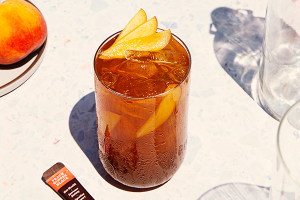
Try This: Versatile Vietnamese Peach Iced Tea
In Vietnamese cuisine, peach tea is a popular summer beverage, called Trà Dào [7] . While the prep time is a little longer, this drink recipe has several advantages:
-
- You don’t need to hunt down dried peach leaves — loose or bagged. One fresh peach will do.
- Using the whole fresh fruit means you get more of those vitamins, minerals and polyphenols packed in every peach.
- The base of the recipe – a peach syrup – can be used to add natural peach flavor to hot or iced tea easily. And this just doesn’t just apply to black tea. Try adding peach to green tea or white tea to experiment with different flavor profiles.
Here’s how to copy the Vietnamese and make homemade peach tea using fresh fruit:
-
- Slice up one ripe peach and toss it in a pot to simmer.
- Sprinkle a bit of sugar over the sliced peaches, which not only adds sweetness but helps to draw out the fruit’s moisture. As the peaches cook, their juices and the sugar will form a peach syrup. You only need about 2 tablespoons of sugar, but adjust depending on the strength of your sweet tooth.
- If you’d rather avoid added sweetener altogether, substitute frozen peaches for fresh. They’ll break down and release moisture much more easily as they cook. You can even puree them, thinning it out with a bit of hot water, until you get a syrupy consistency.
- If you’re making hot tea, add the entire peach mixture right into a pot of brewed black tea. Most of the flavor and sweetness will come from the syrup, but juices from peach slices will continue to seep into the black tea — a continuous infusion of fruitiness.
- For iced tea, take your peaches and syrup off the heat and refrigerate until it cools thoroughly. Strain your peach slices out — you just want the juices and syrup for this one. Fill a tall glass with ice cubes, pour in cold brew black tea, and drizzle in your peach syrup until the sweetness and flavor profile fits your liking.
- Hold onto your leftover cooked peaches as a topping for yogurt, oatmeal or even ice cream!
The Last Word
Peach tea – whether enjoyed on its own merit or added to black tea — provides a refreshing flavor and a hint of antioxidants. While you might not find loose peach leaves and bark in your neighborhood tea shop, you can utilize the whole fruit found in every grocery store. Or use frozen peaches to enjoy this great tea year-round! Whatever tea recipe you prefer, peach tea (or peach black tea) is an accessible and healthy way to add a bit of sweetness to your day. Perfect as a yummy summertime tea!
